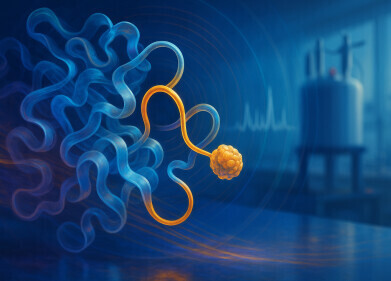-
 A new treatment for aggressive breast cancer may have been found
A new treatment for aggressive breast cancer may have been found
Microscopy & microtechniques
Drug compounds found to fight aggressive breast cancer
Jul 09 2013
Researchers from the Walter and Eliza Hall Institute, Melbourne, have found that some anti-leukaemia compounds that are currently undergoing clinical trials could also be used as a treatment for breast cancer. The BH3-mimetics compounds that are being tested for use against leukaemia have been found to be successful in fighting one of the most common forms of breast cancer.
When used with the drug tamoxifen - which is used as a treatment for breast cancer - the BH3-mimetics were an effective form of treatment for aggressive oestrogen receptor-positive (ER-positive) breast cancers. Around 70 per cent of breast cancers around the world are ER-positive, meaning that the compounds could offer a more effective way of fighting them. It is hoped that testing of this treatment will progress to clinical trials within the next few years.
The research was led by Professors Geoff Lindeman and Jane Visvader, alongside Doctors Delphine Merino and Francois Vaillant from the Walter and Eliza Hall Institute's Breast Cancer Laboratory. Professor Lindeman said that the BH3-mimetic compounds worked by making the cancer cells more likely to die. This is achieved through neutralising the BCL-2 protein cells found within the cancer cells. These proteins are found within around 85 per cent of all ER-positive breast cancers at high levels and work to make the cancer cells hard to kill. It is these proteins that allow the cancer cells to survive treatments such as chemotherapy.
Professor Lindeman said: "Drs Vaillant and Merino looked at the effect of adding BH3-mimetics to the standard hormone treatment, tamoxifen, used for a subtype of ER-positive cancers called luminal B cancers, which had high levels of BCL-2.
"They found that a BH3-mimetic called ABT-199/GDC-0199 improved the effectiveness of hormone therapy by stopping or delaying the growth of these aggressive tumours. In one of the tumour models, the combined treatment caused complete disappearance of the tumour, while standard treatment had only a partial and unsustained benefit."
Digital Edition
Lab Asia Dec 2025
December 2025
Chromatography Articles- Cutting-edge sample preparation tools help laboratories to stay ahead of the curveMass Spectrometry & Spectroscopy Articles- Unlocking the complexity of metabolomics: Pushi...
View all digital editions
Events
Jan 21 2026 Tokyo, Japan
Jan 28 2026 Tokyo, Japan
Jan 29 2026 New Delhi, India
Feb 07 2026 Boston, MA, USA
Asia Pharma Expo/Asia Lab Expo
Feb 12 2026 Dhaka, Bangladesh
.jpg)
-(2).jpg)
















